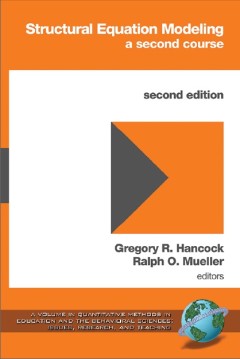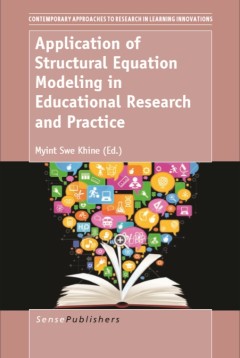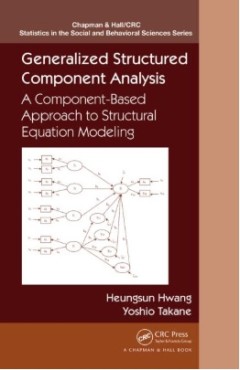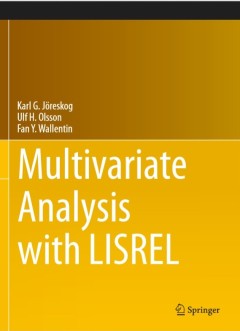Ditapis dengan

Structural equation modeling : a second course - 2nd ed.
- Edisi
- Edisi 2
- ISBN/ISSN
- 978-1-62396-246-3
- Deskripsi Fisik
- -
- Judul Seri
- Quantitative methods in education and the behavioral sciences
- No. Panggil
- EB 519.5’3 GRE s
- Edisi
- Edisi 2
- ISBN/ISSN
- 978-1-62396-246-3
- Deskripsi Fisik
- -
- Judul Seri
- Quantitative methods in education and the behavioral sciences
- No. Panggil
- EB 519.5’3 GRE s
Using Mplus for Structural Equation Modeling : A Researcher's Guide (Second E…
- Edisi
- 2nd Edition
- ISBN/ISSN
- 978-1-4522-9147-5
- Deskripsi Fisik
- ix, 231 hlm
- Judul Seri
- -
- No. Panggil
- EB 519.5 KEV u
- Edisi
- 2nd Edition
- ISBN/ISSN
- 978-1-4522-9147-5
- Deskripsi Fisik
- ix, 231 hlm
- Judul Seri
- -
- No. Panggil
- EB 519.5 KEV u
A primer on partial least squares structural equation modeling ( PLS-SEM)
academics, industry, government, and individuals are confronted with an explosion of data. The data increasingly are emerging from sources such as web traffic, social networking interactions, search behavior, sensors that track suppliers, customers, and shipments, and GPS systems that monitor traffic, to name only some of the more visible sources. This trend, often referred to as the age o…
- Edisi
- -
- ISBN/ISSN
- 978-1-4522-1744-4
- Deskripsi Fisik
- xv, 293 hlm
- Judul Seri
- -
- No. Panggil
- EB 511 JOS a
Multiple Regression and Beyond : An Introduction to Multiple Regression and S…
Multiple Regression and Beyond is designed to provide a conceptually oriented introduction to multiple regression along with more complex methods that fl ow naturally from multiple regres- sion: path analysis, confi rmatory factor analysis, and structural equation modeling. Multiple regression (MR) and related methods have become indispensable tools for modern social science researchers. MR…
- Edisi
- 2nd Edition
- ISBN/ISSN
- 978-1-315-74909-9
- Deskripsi Fisik
- xi, 583 hlm
- Judul Seri
- -
- No. Panggil
- EB 519.5 TIM m
Principles and Practice of Structural Equation Modeling (Third Edition)
It’s not often in life that you get three chances at something. Thus, it was a privilege for me to write the third edition of this book. This edition builds on the strengths of the second by presenting structural equation modeling (SEM) in a clear, accessible way for readers without extensive quantitative backgrounds. Many new examples of the applica- tion of SEM to actual research proble…
- Edisi
- Third Edition
- ISBN/ISSN
- 978-1-60623-876-9
- Deskripsi Fisik
- 427 hlm
- Judul Seri
- -
- No. Panggil
- EB 519.5 REX p
A Beginer's Guide to Structural Equation Modeling (Fourth Edition)
This book presents a basic introduction to structural equation modeling (SEM). Readers will find that we have followed our tradition of keeping examples rudi- mentary and easy to follow. The reader is provided with a review of correlation and covariance, followed by multiple regression, path, and factor analysis in order to better understand the building blocks of SEM. We then describe the …
- Edisi
- 4th ed.
- ISBN/ISSN
- 978-1-315-74910-5
- Deskripsi Fisik
- xx, 343 hlm
- Judul Seri
- -
- No. Panggil
- EB 519.5 RAN a
A Step-by-Step Approach to Using SAS ® for Factor Analysis and Structural Eq…
- Edisi
- 2nd Edition
- ISBN/ISSN
- 978-1-61290-387-3
- Deskripsi Fisik
- xvii, 401 hlm
- Judul Seri
- -
- No. Panggil
- EB 519.5 NOR a
- Edisi
- 2nd Edition
- ISBN/ISSN
- 978-1-61290-387-3
- Deskripsi Fisik
- xvii, 401 hlm
- Judul Seri
- -
- No. Panggil
- EB 519.5 NOR a

Application of Structural Equation Modeling in Educational Research and Practice
- Edisi
- -
- ISBN/ISSN
- 978-94-6209-332-4
- Deskripsi Fisik
- -
- Judul Seri
- Contemporary Approaches to Research in Learning Innovations
- No. Panggil
- EB 519.5'3 MYI a
- Edisi
- -
- ISBN/ISSN
- 978-94-6209-332-4
- Deskripsi Fisik
- -
- Judul Seri
- Contemporary Approaches to Research in Learning Innovations
- No. Panggil
- EB 519.5'3 MYI a

Generalized Structured Component Analysis : A Component-Based Approach to Str…
- Edisi
- Edisi 1
- ISBN/ISSN
- 978-1-4665-9295-7
- Deskripsi Fisik
- -
- Judul Seri
- Statistics in the Social and Behavioral Sciences Series
- No. Panggil
- EB 519.5'3 HEU g
- Edisi
- Edisi 1
- ISBN/ISSN
- 978-1-4665-9295-7
- Deskripsi Fisik
- -
- Judul Seri
- Statistics in the Social and Behavioral Sciences Series
- No. Panggil
- EB 519.5'3 HEU g

Multivariate Analysis with LISREL
- Edisi
- Edisi 1
- ISBN/ISSN
- 978-3-319-33153-9
- Deskripsi Fisik
- -
- Judul Seri
- Springer Series in Statistics
- No. Panggil
- EB 330.0285 KAR m
- Edisi
- Edisi 1
- ISBN/ISSN
- 978-3-319-33153-9
- Deskripsi Fisik
- -
- Judul Seri
- Springer Series in Statistics
- No. Panggil
- EB 330.0285 KAR m
 Karya Umum
Karya Umum  Filsafat
Filsafat  Agama
Agama  Ilmu-ilmu Sosial
Ilmu-ilmu Sosial  Bahasa
Bahasa  Ilmu-ilmu Murni
Ilmu-ilmu Murni  Ilmu-ilmu Terapan
Ilmu-ilmu Terapan  Kesenian, Hiburan, dan Olahraga
Kesenian, Hiburan, dan Olahraga  Kesusastraan
Kesusastraan  Geografi dan Sejarah
Geografi dan Sejarah